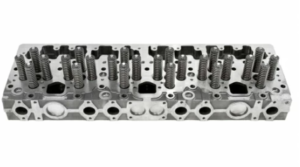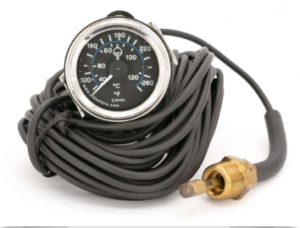
Rocker Lever Removal and Inspection Procedures

The rocker lever assembly in Cummins ISM, ISMe, and QSM11 engines is a critical component responsible for transferring motion from the camshaft lobes to the valves and injectors. Proper inspection and maintenance of the rocker lever assembly ensures smooth engine operation, accurate valve timing, and optimal fuel injection performance.
This guide provides step-by-step procedures for removing, inspecting, and reassembling rocker levers, including wear checks, lubrication points, and best practices for reinstallation.
For specific torque values, valve lash adjustments, and reassembly specifications, consult an OEM service manual or contact Diesel Pro Power for expert guidance.
Parts Catalog for ISM Cummins Marine and Industrial Engines
Parts Catalog for QSM11 Cummins Marine and Industrial Engines
Safety and Preparation Before Rocker Lever Removal
Before removing the rocker lever assembly, proper safety measures must be followed to prevent damage to engine components and ensure safe handling.
Personal Protective Equipment (PPE)
✔ Safety glasses – Protects against debris and pressurized fluids.
✔ Mechanic gloves – Prevents cuts and burns from engine components.
✔ Steel-toe boots – Protects against heavy falling parts.
✔ Hearing protection – Recommended when working in high-noise environments.
Work Area and Tool Preparation
- Ensure a clean, well-lit workspace to avoid contamination.
- Have all tools and measuring instruments properly calibrated.
- Use magnetic trays or labeled containers to store fasteners and small components.
Essential Tools for Rocker Lever Service

✔ Torque wrench – For proper bolt tightening.
✔ Feeler gauges – For measuring valve lash clearance.
✔ Dial indicator – For checking wear on rocker lever pivots.
✔ Straightedge and micrometer – For checking rocker arm alignment.
✔ Solvent and cleaning brushes – For degreasing components before inspection.
Step-by-Step Rocker Lever Removal and Inspection Procedures
The rocker lever assembly must be removed carefully and inspected thoroughly to ensure proper function and longevity.
Step 1: Engine Preparation Before Rocker Lever Removal

- Shut Down the Engine and Allow it to Cool
- Never attempt to remove components from a hot engine to prevent burns or warping.
- Never attempt to remove components from a hot engine to prevent burns or warping.
- Disconnect the Battery and Electrical Components
- Prevent accidental engine cranking by disconnecting the negative battery cable.
- Prevent accidental engine cranking by disconnecting the negative battery cable.
- Remove the Valve Cover
- Loosen and remove the valve cover bolts.
- Carefully lift the valve cover off and inspect the gasket for damage.
Step 2: Removing the Rocker Lever Assembly
- Loosen the Rocker Lever Shaft Bolts Evenly
- Loosen bolts in stages to relieve spring tension gradually.
- Avoid loosening one bolt completely before others to prevent component misalignment.
- Remove the Rocker Lever Assembly
- Lift the entire rocker lever shaft assembly carefully to avoid damaging the valve bridge.
- Place the rocker assembly on a clean workbench for inspection.
- Inspect Pushrods and Rocker Lever Contact Points
- Remove pushrods one by one, ensuring they remain in order for reinstallation.
- Inspect the tips for excessive wear or bending.
Step 3: Rocker Lever Visual Inspection
- Inspect Rocker Lever Pivot Points
- Check for excessive wear, scoring, or looseness in pivot bores.
- If wear exceeds OEM-specified tolerances, the rocker lever must be replaced.
- Examine the Valve Contact Surfaces
- Look for pitting, uneven wear, or cracks where the rocker lever contacts the valve stem.
- Look for pitting, uneven wear, or cracks where the rocker lever contacts the valve stem.
- Check the Adjusting Screws and Lock Nuts
- Ensure threads are undamaged and adjuster screws turn freely.
- Replace worn or damaged adjuster screws.
- Measure Rocker Lever Bushing Clearance
- Use a micrometer to measure the clearance between the bushing and shaft.
- If clearance exceeds specifications, replace the rocker lever bushing.
Step 4: Checking Rocker Lever Shaft and Oil Supply
- Inspect the Rocker Lever Shaft for Wear
- Roll the shaft on a flat surface and check for bends or misalignment.
- Measure shaft diameter at multiple points to detect wear or tapering.
- Ensure Proper Oil Passage Flow
- Blow compressed air through the shaft oil passages to remove blockages.
- If passages are clogged, clean with solvent before reinstalling.
Step 5: Checking Rocker Lever Alignment and Straightness
- Use a Straightedge to Check Rocker Alignment
- Place a straightedge along the rocker lever shaft to check for misalignment.
- If the rockers do not sit evenly, replace damaged components.
- Measure Valve Stem Contact Location
- Use a dial indicator to check rocker lever movement.
- Verify contact points align with valve stems properly.
Step-by-Step Rocker Lever Reinstallation
After completing inspections and necessary repairs, the rocker lever assembly must be reinstalled correctly to ensure proper valve operation.
Step 1: Preparing the Rocker Lever Assembly for Installation
- Lubricate All Moving Parts
- Apply engine assembly lubricant to the rocker shaft bushings, pivot points, and adjuster screws.
- Ensure oil passages are clean before installation.
- Reinstall the Rocker Lever Assembly
- Carefully position the rocker assembly over the pushrods and valves.
- Align the rocker lever shaft with the mounting holes.
- Install and Torque the Rocker Lever Shaft Bolts
- Tighten bolts gradually and evenly in a crisscross pattern.
- Follow the OEM torque specifications for final tightening.
Step 2: Adjusting Valve Lash Clearance

Proper valve lash adjustment ensures optimal valve timing and fuel injector operation.
- Rotate the Engine to Top Dead Center (TDC)
- Turn the crankshaft until cylinder 1 is at TDC on the compression stroke.
- Turn the crankshaft until cylinder 1 is at TDC on the compression stroke.
- Use Feeler Gauges to Measure Valve Clearance
- Insert a feeler gauge between the rocker lever and valve stem.
- Adjust the set screw until the correct clearance is achieved.
- Torque the Adjusting Screw Lock Nuts
- Secure lock nuts to prevent movement after adjustment.
- Recheck clearances before final tightening.
Step 3: Reinstalling the Valve Cover and Final Checks
- Inspect and Replace the Valve Cover Gasket
- If the gasket shows signs of wear or damage, install a new gasket.
- If the gasket shows signs of wear or damage, install a new gasket.
- Secure the Valve Cover and Bolts
- Tighten the valve cover bolts evenly to prevent leaks.
- Tighten the valve cover bolts evenly to prevent leaks.
- Reconnect the Battery and Start the Engine
- Listen for abnormal noises or ticking sounds indicating improper adjustments.
- Check oil pressure and valve movement for proper operation.
Final Notes on Rocker Lever Inspection for Cummins ISM, ISMe, and QSM11
✔ Always follow the correct torque sequence when tightening rocker lever bolts.
✔ Keep components clean and lubricated during reassembly to prevent wear.
✔ Inspect pushrods and valve stems for proper alignment before final assembly.
✔ Recheck valve lash adjustments after the first few hours of engine operation.
✔ Consult an OEM manual or Diesel Pro Power for expert guidance.
By following these best practices for rocker lever removal, inspection, and reinstallation, you ensure smooth engine operation, optimal valve timing, and extended service life for Cummins ISM, ISMe, and QSM11 engines.
Parts Catalog for ISM Cummins Marine and Industrial Engines
Parts Catalog for QSM Cummins Marine and Industrial Engines



 Free US Calls: 1-888-433-4735
Free US Calls: 1-888-433-4735 International: 305-545-5588
International: 305-545-5588